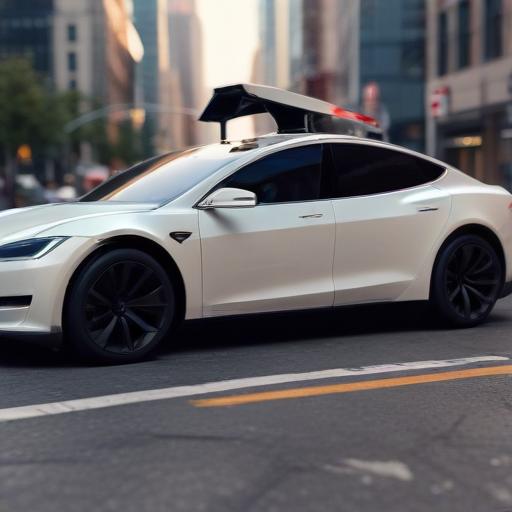Federal traffic safety regulators are currently investigating potential issues with Tesla’s self-driving “robotaxis” following reports and videos that demonstrate concerning driving behaviors, such as sudden braking and improper lane changes. The inquiry by the National Highway Traffic Safety Administration (NHTSA) has raised alarms regarding the safety of these vehicles, especially as Tesla ambitions to lead in a future where autonomous vehicles would dominate the roads without drivers.
The NHTSA confirmed it is in contact with Tesla to gather more information about these incidents, which come at a critical time when the company is promoting its robotaxis as a revolutionary leap in automotive technology. The agency’s investigation could cast doubt on CEO Elon Musk’s previous assertions concerning the safety and reliability of these vehicles.
Despite the emergence of these troubling videos, some passengers in Austin, Texas, have expressed satisfaction with their experiences in the robotaxis. Following the initial rollout, Tesla’s stock saw fluctuations, rising 8% before falling more than 2% amid concerns over NHTSA’s review. Analysts such as Dan Ives from Wedbush Securities have called the test runs a “huge success,” pointing out that any issues encountered will likely be resolved, suggesting that the apprehensions highlighted in videos may be exaggerated.
However, critics are voicing significant concerns about the tests. Experts like Sam Abuelsamid argue that the erratic performance of Tesla’s self-driving software poses safety risks, asserting that such systems should not be operating in public settings without skilled human oversight. One particularly troubling video shows a Tesla misinterpreting traffic indicators and straying into oncoming traffic, although the passenger downplayed the incident, emphasizing the absence of nearby vehicles.
The NHTSA previously opened an investigation into Tesla’s Full Self-Driving feature last year after several accidents were reported, leading to a recall of millions of vehicles. As Musk forecasts the deployment of considerable fleets of these robotaxis next year, he faces stiff competition from other autonomous driving firms, such as Waymo and Amazon’s Zoox, which are already establishing operations in various cities, including Austin.
In the face of these challenges, Musk’s recent political affiliations and decisions may have alienated some of Tesla’s core customer base, further complicating the company’s efforts to achieve success in the autonomous vehicle sector.
The outlook for Tesla’s self-driving ambitions seems to hinge on the results of the investigation and the feedback from consumers as the technology continues to evolve. Optimistically, should these issues be addressed effectively, Tesla could emerge stronger, reinforcing its position as a key player in the future of autonomous transportation.
